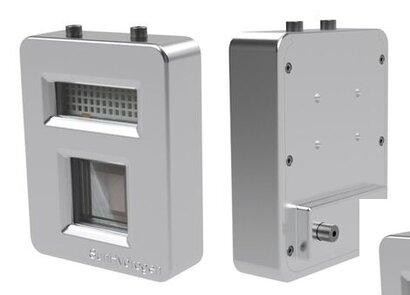
At the start of 2022, SunHydrogen outlined four milestones for the development and demonstration of a production-quality prototype of its nanoparticle-based green hydrogen technology by the end of Q4 2022.
These included:
Successful fabrication of semiconductor units at production-quality prototype scales
Successful integration of membranes at production-quality prototype scales
Successful integration of catalysts at production-quality prototype scales
Successful testing and demonstration of production-quality prototype units
The company has now shared a summary of its Q4 progress in each of these areas.
SunHydrogen's nanoparticle technology utilises a pairing of two semiconductor units to maximise sunlight absorption and hydrogen production efficiency. In Q2 and Q3 of 2022, the Company shared its success in fabricating one of the two proprietary nanoparticle-based semiconductor units at production-quality prototype scales. SunHydrogen also successfully demonstrated hydrogen production by pairing one of its two nanoparticle-based semiconductor units with silicon heterojunction solar cells and thin-film perovskite solar cells. However, the fabrication of the second proprietary semiconductor unit was delayed due to supply chain challenges.
In Q4 2022, SunHydrogen's Iowa scientific team at the SunHydrogen Lab and the University of Iowa identified additional alternate solutions to pair its proprietary nanoparticle-based semiconductor units at production-quality prototype scales. The pairing of these units generated photovoltages over 1.8 V, sufficiently exceeding the voltages required for water splitting. In addition, SunHydrogen's Iowa scientific team increased the photocurrent density of one of its nanoparticle-based semiconductor units by 58 percent. Photocurrent density is a crucial metric that is directly proportional to the rate of hydrogen production.
In parallel, SunHydrogen continues to pursue the development of vendor-independent novel deposition chemistries for growing its nanoparticle-based semiconductor units.
SunHydrogen has also entered into a Technical Service Agreement with Alliance for Sustainable Energy, LLC, manager and operating contractor of the National Renewable Energy Laboratory (NREL), to integrate its cells in SunHydrogen's model for solar water splitting. All approaches will continue to be evaluated at prototype-relevant scales.
In Q3 of 2022, SunHydrogen completed its initial study on membrane integration with industrial partners Chromis Technologies and Ionomr Innovations.
During Q4 2022, the Singh Lab at the University of Michigan, led by Dr. Nirala Singh, one of the lead inventors on SunHydrogen's patent for Photoelectrosynthetically Active Heterostructures, studied the efficacy of the membrane integration process for both anion exchange membranes and cation exchange membranes. All the membranes prevented bulk liquid crossover, indicating the mechanical stability of the materials. The Singh Lab also measured the stability of the membranes in sulfuric acid and found the membranes to be stable. However, the areal resistances of the substrates after membrane integration were too high. Future work will consist of coating the new, higher-porosity substrates with membranes to decrease membrane thickness and, subsequently, membrane resistance.
The hydrogen evolution catalysts that were developed in Q3 2022 match the best-performing commercial catalysts and can be deposited on the Company's solar cell materials with low thickness to mitigate parasitic light absorption.
In Q4 2022, the Singh Lab focused on the oxygen evolution reaction (OER) electrocatalyst. The OER electrocatalyst maintained an overvoltage of
In Q3 2022, SunHydrogen designed and constructed a physical, working model of a small-scale prototype unit. This initial production-quality prototype was designed to house one hydrogen generator – integrated with catalysts, membranes, and light absorber – and to safely produce high-purity green hydrogen.
SunHydrogen's nanoparticle technology directly uses the electrical charges created by sunlight to generate hydrogen when the sun is shining. However, this prototype was also designed to be able to power the catalyst and membrane integration assembly when the sun is not shining using renewable grid electricity from wind or hydropower sources.
In Q4 2022, SunHydrogen successfully demonstrated solar hydrogen production using this prototype. Additionally, the Company is proud to share a new video featuring the prototype at work at SunHydrogen's Iowa laboratory.
“We are happy to end the quarter with testing and demonstration of this first-ever, production-quality prototype of our nanoparticle-based green hydrogen technology” said SunHydrogen's Chief Scientific Officer Dr. Syed Mubeen. “With this initial model complete, we now intend to focus on larger-scale panels that house multiple arrays of hydrogen generators to maximise hydrogen efficiency and production rates.”
For additional information:

